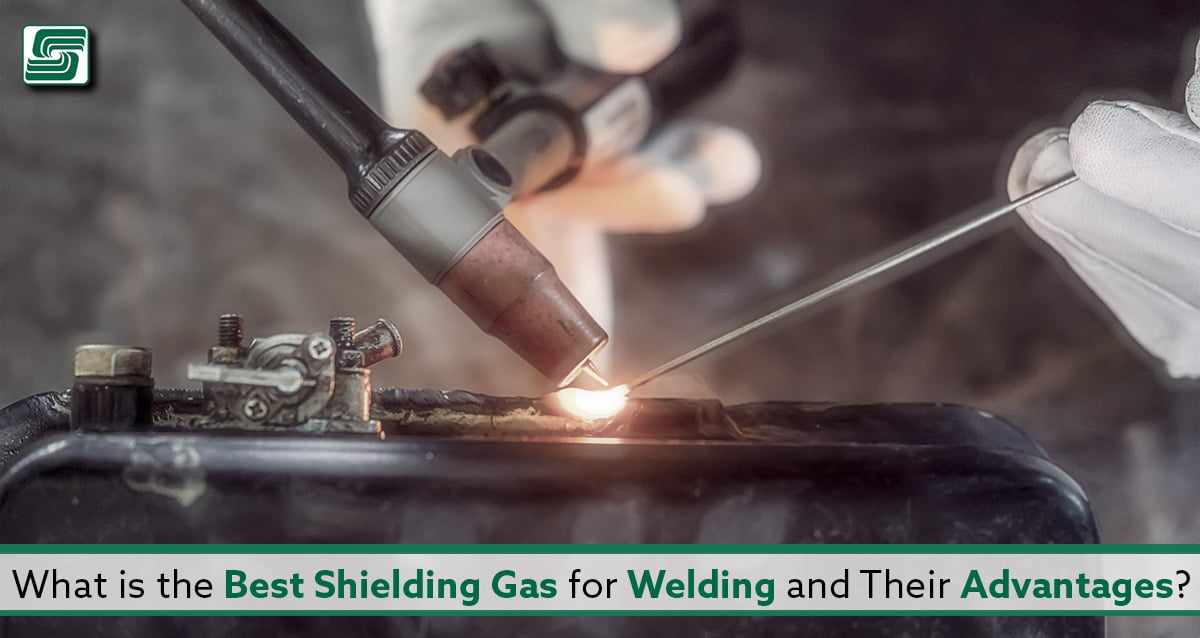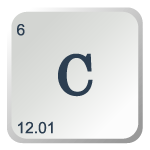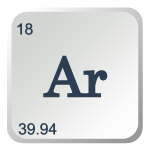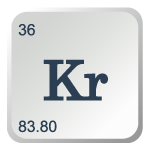
Paraphrasing a movie quote: one does not simply weld without shielding gas.
In a previous article, The Advent of Gas Welding Advanced Welding's Importance, we explore how this welding evolved through the Second Industrial Revolution. Weakened welds became the impetus to discover ways of using noble gas as a protective shield when welding with gas.
We touched on shielding gases in that article. Today, we're focusing on them.
The Need for Shielding Gas
The welding operation's quality and consistency result from several variables. The welding operator's expertise, equipment, filler metal availability, and many other variables play an important role. Each plays an important role in ensuring that the welded material withstands the conditions they expose it to at the end of production without the risk of corrosion, cracking, or other detrimental consequences.
The filler metal's formulation, as well as a shielding gas, affects welding performance—for example, how smoothly the wire welds, its spatter levels, and its arc quality. Shielding gas may also affect the amount of weld fume generated, which may alter the finished weld's mechanical properties. When selecting shielding gas for an application, welding operators can achieve the desired welding performance and minimize rework caused by poor weld quality by selecting the appropriate shielding gas.
Welding is a process that requires the use of heat to fuse metals together. Welders typically use a shielding gas to protect other areas from the heat. Shielding gases are substances used to protect sensitive surfaces from the heat and flames of welding. There are several types of shielding gases, each with unique properties. Understanding each type will help you decide which one is right for your specific project.
Identifying the components of your welding project, ventilation setup, and personal protective equipment (PPE) is essential when learning how to weld. Understanding what you need and why you need it can save you time and keep you safe while working with these processes. This article dives into the world of shielding gases for welding and what they do.
What is a Shielding Gas?
Shielding gas is used to protect sensitive surfaces from the intense heat of a welding project. Welding is a process that uses heat to fuse metal together. The heat from this process can damage sensitive surfaces, like eyes, skin, and lungs. To prevent damage to these sensitive areas, welders use a specific type of gas during welding. The type of gas used varies depending on the type of welding project you're working on.
The shielding gas protects people and surfaces from the heat and sparks produced by the welding machine. A gas source delivers the shielding gas and travels through hoses to reach the welding torch. Shielding gases use a specific gas source and hoses. When the gas reaches the welding torch, it mixes with oxygen to create a gas shield. This gas shield helps prevent damage to nearby surfaces.
Reactive and Inert Gases
There are two classifications of gas: reactive and inert, and welders use both in welding for various reasons.
Inert gases, such as helium and argon, are nonreactive, nonreactive gases used as a protective shield in welding. These gases do not affect the weld's outcome because they don't interact chemically with their surroundings.
Welds can be altered by using reactive gases. These gases include nitrogen, oxygen, hydrogen, and carbon dioxide. These gases are reactive and bond with the elements in the weld cup, altering the weld. Unlike other atoms on the periodic table, these are stable, as they have the correct balance of electrons. They are not trying to gain or lose electrons, so they don't interact with their surroundings. Although some of these atoms are usually inert, they may react under certain conditions.
Types of Shielding Gases
Carbon Dioxide
 Carbon dioxide (CO2) is the best choice for a shielding gas when welding materials like iron, steel, or aluminum. This type of gas is non-flammable and works well for many welding, fire extinguishers, and carbonated beverages. CO2 is a colorless gas with a moderate diffusion rate, which covers an area evenly, making it a good choice for welding larger surfaces.
Carbon dioxide (CO2) is the best choice for a shielding gas when welding materials like iron, steel, or aluminum. This type of gas is non-flammable and works well for many welding, fire extinguishers, and carbonated beverages. CO2 is a colorless gas with a moderate diffusion rate, which covers an area evenly, making it a good choice for welding larger surfaces.
- When welding with a CO2 shield, use a regulated flow and pressure.
- CO2 should be at 10-30 PSI and a flow rate of 40-70 SCFH.
- CO2 can be used with a hot or cold arc.
- Hot arc processes use CO2 gas from 5000-6000 °F.
- Cold arc processes use CO2 gas from 2500-3000 °F.
CO2 is an excellent choice as a shielding gas for welding. It is inexpensive and works well in a variety of welding processes. The only downside is that CO2 is harmful to the environment.
Argon
 An argon shield is best when welding materials like stainless steel and aluminum. Argon is a colorless, odorless, non-toxic gas that is significantly more expensive than CO2. This type of gas is non-flammable and works well for all welding types.
An argon shield is best when welding materials like stainless steel and aluminum. Argon is a colorless, odorless, non-toxic gas that is significantly more expensive than CO2. This type of gas is non-flammable and works well for all welding types.
Argon is also used to grow plants, make filtration systems, and in nuclear reactors. Argon is a noble gas that has a high rate of diffusion. This means it covers an area unevenly, making it a good choice for welding smaller surfaces.
- Use a regulated flow and pressure when welding with an argon shield.
- Argon should be at 20-40 PSI and with a flow rate of 40-70 SCFH.
- Argon can be used with a hot or cold arc.
- When welding with a hot arc, argon should be used between 3800-4800 °F.
- When welding with a cold arc, argon should be used between 2000-3000 °F.
Argon is an excellent choice as a shielding gas for welding. It is expensive, but it is well worth the cost. Argon is great for welding stainless steel and aluminum. It is also non-flammable, so it works well for welding in areas with flammable gas lines.
Helium
A helium shield is best when welding materials like stainless steel, magnesium, and aluminum. Helium is a colorless, odorless, non-toxic gas that is significantly more expensive than CO2. This type of gas is non-flammable and works well for all welding types.
- Use a regulated flow and pressure when welding with a helium shield.
- The helium should be at 40-60 PSI and with a flow rate of 40-70 SCFH.
- Helium can be used with a hot or cold arc.
- When welding with a hot arc, the helium should be used between 4500-5000 °F.
- When welding with a cold arc, the helium should be used between 3500-4500 °F.
Helium is an excellent choice as a shielding gas for welding. It is expensive, but it is well worth the cost. It is great for welding stainless steel, magnesium, and aluminum. It is also non-flammable, so it works well in areas with flammable gas lines.
Krypton
 A krypton shield is the best choice when welding materials like stainless steel, silicon, and copper. Krypton is a colorless, odorless, non-toxic gas that is significantly more expensive than CO2. This type of gas is non-flammable and works well for all welding types.
A krypton shield is the best choice when welding materials like stainless steel, silicon, and copper. Krypton is a colorless, odorless, non-toxic gas that is significantly more expensive than CO2. This type of gas is non-flammable and works well for all welding types.
- Use a regulated flow and pressure when welding with a krypton shield.
- The krypton should be at 40-50 PSI and at a flow rate of 40-70 SCFH.
- Krypton can be used with a hot or cold arc.
- When welding with a hot arc, krypton should be used between 3600-4200 °F.
- When welding with a cold arc, krypton should be used between 2100-2700 °F.
Krypton is an excellent choice as a shielding gas for welding. It is expensive, but it is well worth the cost. It is great for welding stainless steel, silicon, and copper. It is also non-flammable, so it works well in areas with flammable gas lines.
Exhaust Gas (EG) Shifting
When welding materials like carbon steel, stainless steel, and copper, exhaust gas shifting is the best choice for a shield. Exhaust gas is the waste gas that comes from burning fuel. This type of gas is flammable and works well for all welding types.
Exhaust gas combines several gases, including CO, CO2, and CO, and is a mixture of an oxidizing and reducing gas, making it an excellent choice for welding carbon steel and stainless steel.
- Use a regulated flow and pressure when welding with an exhaust shield.
- The exhaust gas should be at 30-50 PSI and at a flow rate of 40-70 SCFH.
- Use exhaust gas with a hot or cold arc.
- When welding with a hot arc, exhaust gas should be used between 3600-4500 °F.
- When welding with a cold arc, exhaust gas should be used between 1500-2500 °F.
Exhaust gas is a good choice for welding carbon steel and stainless steel. It is also flammable, so it may not be a good choice for welding in areas with flammable gas lines.
Simplified MSDS
To understand the properties of each shield gas type, you need to know what they are. CO2 is a moderately priced, non-flammable, colorless, odorless gas that is used as a shielding gas in gas welding.
When exposed to open flames, CO2 will release oxygen and cause the flame to extinguish. Argon is a colorless, odorless, non-toxic gas that is used as a shielding gas in arc welding, and it is significantly more expensive than CO2. Argon is used in pressurized air because it is non-flammable.
Mixed Gas Shielding GMS
If you're welding a project that requires two different shield gases, you can use a mixed gas shield. A mixed gas shield provides a two-gas shield using two separate sources and mixes in the main gas line before they reach the torch.
When using a mixed gas shield, it is important to ensure the correct mixing ratio. If you mix the gases incorrectly, you could damage the welding machine.
Gas Mixtures
CO/CO² Mix
A CO/CO2 mix combines carbon dioxide and regular air. The CO2 component is typically between 5% to 30% to provide the necessary protection from the heat sparks while keeping the process cost-effective. This way, it's easy to control how much you're spending and how much CO2 is getting into your system.
People often use CO/CO2 in large-scale industrial welding, a popular option for small home welding projects. It's often the best choice for welding aluminum because it doesn't leave any build-up inside the pores of the metal and is great for protecting the environment, too.
Argon/Oxygen
Small amounts of oxygen, normally 1 to 5 percent, mixed with argon greatly stabilize the welding arc, increases filler metal droplet rates, lowers spray transition currents, and influence bead form. Besides keeping the weld pool fluid and molten for longer periods, the metal flows out to the weld toes more freely.
A welder usually produces stainless steel welds with a mixture containing 1% oxygen, and this amount of oxygen is usually sufficient to stabilize the arc and improve droplet rates and appearance.
When mixing argon with 2% oxygen, you create a spray arc welding mixture for welding carbon steel, low-alloy steel, and stainless steel.
The 1% oxygen mixture provides a better wetting action than the 2% oxygen mixture. The mechanical properties and corrosion resistance of welds created with 1% and 2% oxygen additions are identical. Bead appearance will, however, be darker and more oxidized with stainless steels when using 2% oxygen blends.
Welders use an argon/oxygen blend with 5% oxygen for general carbon steel welding, providing a more fluid but controllable weld pool. It is the most popular mixture for general carbon steel welding because of the additional oxygen.
Argon/CO2
Low-alloy and carbon steels use argon and CO2 blends predominantly. The weld spatter level is higher when using argon and CO2 at high current levels. Using argon and CO2 at higher current levels is necessary for GMAW to maintain stable spray transfer.
Spray transfer is unstable at higher than 20% CO2 levels, and spherical and periodic short-circuits result. A mixture of 5% CO2 and argon can achieve pulsed spray and short-circuit transfer on various material thicknesses. This mixture has a higher tolerance to mill scale and a more controllable puddle than an argon-oxygen blend because of the arc forces it generates.
A blend of 10% CO2 and argon produces a weld pool with the same amount of heat as a 5% argon-argon blend but with greater heat input, allowing for a wider, more flowing weld pool for either short-circuit or spray transfer welds.
Various carbon and low-alloy steel applications use a mixture of 15% argon and CO2. This mixture minimizes excessive melt-through tendencies in short-circuit and spray transfer modes and increases deposition levels and travel speeds, allowing maximum productivity in thin-gauge metal welding. When used for short-circuiting or spray transfer carbon steel, a blend of 20% CO2 and argon produces more spatter than a 15% argon blend.
GMAW commonly uses a mixture of 25% CO2 and argon for low-carbon steel, and it is one of the most popular argon/CO2 blends for high-current applications on heavy base metals. Known for its arc stability, weld pool control, and weld bead appearance, this blend doesn't support spray-mode transfer.
In addition, by combining 40% CO2 with argon, some flux-cored wires can be used to enhance arc stability and reduce spatter. The mixture improves welding penetration compared to the 25% mixture. Adding 50% CO2 to argon produces a blend often used for short-arc pipe welding when other contaminants are present.
Argon/Helium
Because they often combine helium with argon to gain the advantages of both substances, a wide fusion wetting with helium frequently accompanied argon's excellent arc stability and cleaning performance. Using argon/helium blends for nonferrous base metals such as aluminum and copper increases heat input.
The higher the percentage of helium in a base metal, the higher the voltage of the arc. Small amounts of helium, as low as 20%, may adversely affect the arc. The voltage of the arc increases as the percentage of helium increases in aluminum, as does the spatter and weld width to depth ratio.
Porosity is minimized as the percentage of argon increases in aluminum. Argon comprises at least 20% of the mixture, producing and maintaining a stable spray transfer.
When welding nonferrous base metals, a blend of 25% helium and argon provides more heat and improves weld appearance. It is also used for nonferrous welding materials when high-speed mechanized welding is required, and mechanized welding is of primary importance.
When 50% helium is combined with argon, it may be used for high-speed mechanized aluminum welding up to 0.75 in. thick. Combining 75% helium with argon may be used for mechanized aluminum welding over one inch thick.